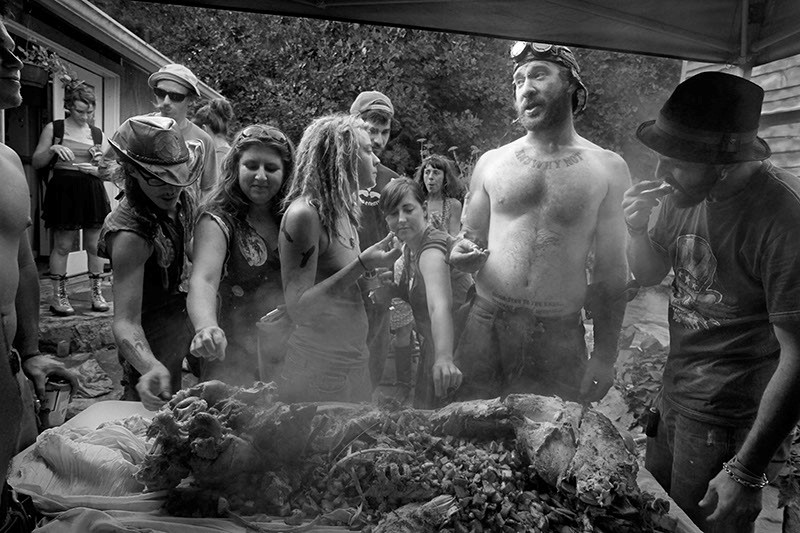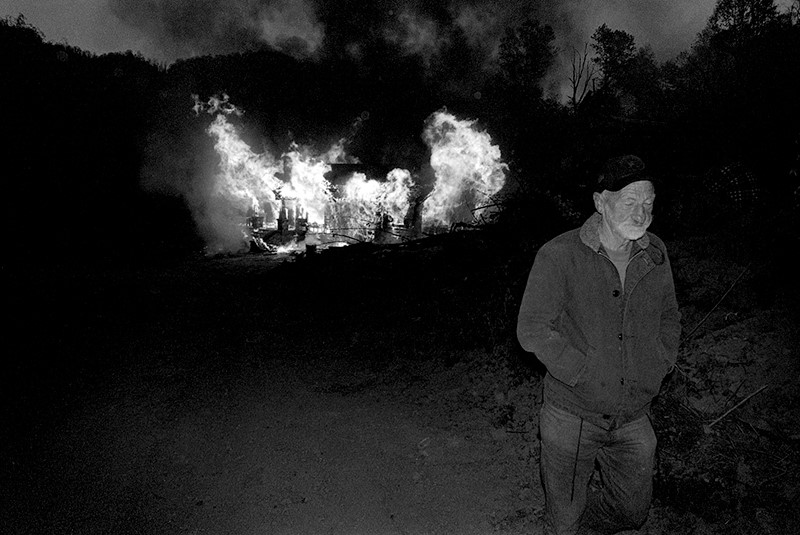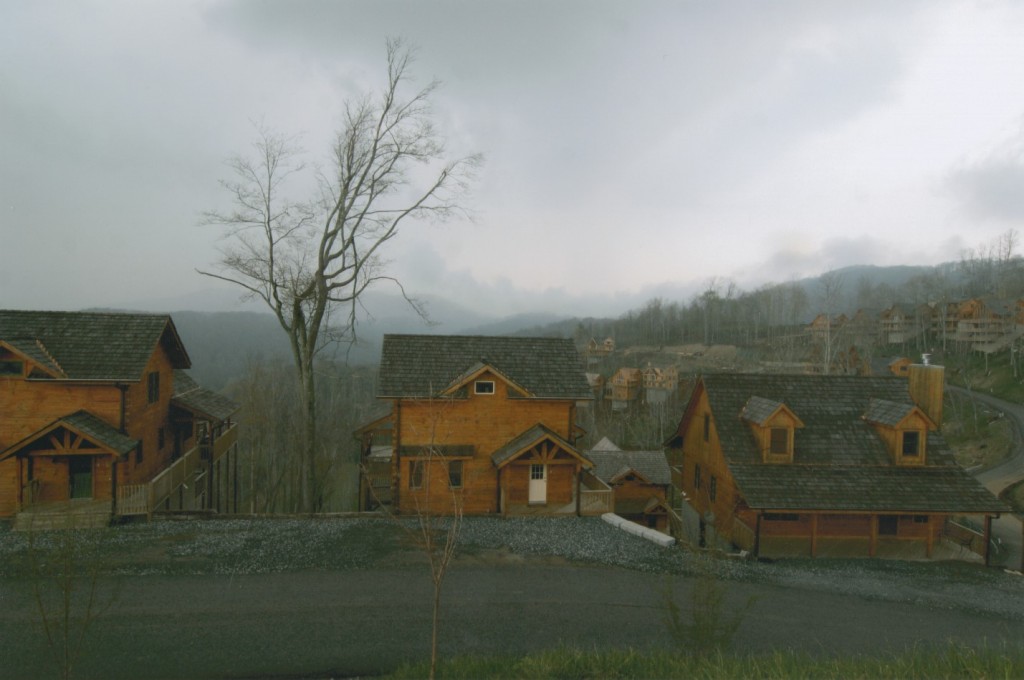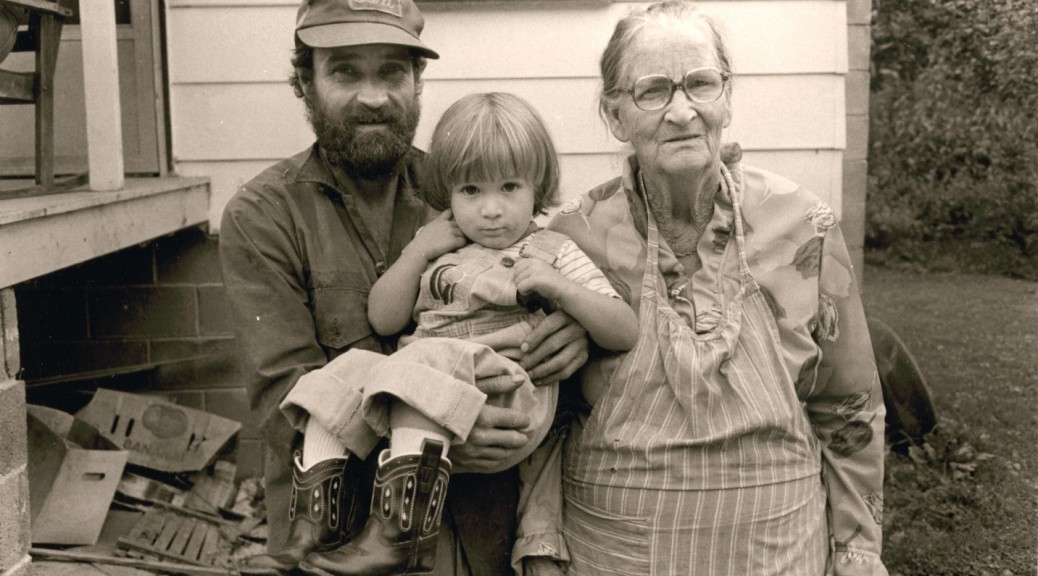
Copyright, Rob Amberg
Rob Amberg journeyed to the Appalachian mountains of North Carolina during the height of the back-to-land movement. It was a time when hippies and artists took John Prine’s advice and “blew up [their] TVs, threw away [their] papers, went to the country, and built [them] a house.” All kinds of folks retreated to the mountains back then, and Amberg arrived in 1973 with the suspicious title of documentary photographer.

Copyright, Rob Amberg
I say suspicious because Appalachia has been a favorite testing ground for ambitious artists for more than a century. These artists, documentarians, and musicologists act as arbiters and preservationists for what they view as culturally interesting and valuable, and Madison County in particular, where Amberg found himself and where I grew up, is not always portrayed in a nuanced light.

Copyright, Rob Amberg.
It’s easy though for artists to fall into the trap of reproducing certain convenient and sometimes sensational tropes. My personal favorite is the proliferation of snake handler portraits. A recent comment on a Vice Magazine series called “Two Days in Appalachia,” a series that provoked much conversation and criticism, pointed out that “poverty porn” has been a long standing tradition of documentary artists creating work from the Appalachian region. So, yes, I think it’s fair to initially approach any stranger with a camera in the mountains with suspicion.

Copyright, Rob Amberg
All of this is to say that Rob Amberg has created a complex, beautiful, and compassionate body of work. Of the many aspects of his work that I find remarkable, I will mention two here: first, when he moved to Madison County in 1973, he came to stay. His photographs, whether documenting the small community of Sodom Laurel, the expansion of I-26, or the continual influx of new people, follow long-term changes in the landscape, a landscape that he calls “ShatterZone.” Amberg defines ShatterZone this way:
Shatter zone is an 18th-century term that refers to an area of fissured or cracked rock that forms a network of veins that are often filled with mineral deposits. The phrase took on new meaning after World War II when anthropologists and political scientists began using it to speak of borderlands. In this modern definition shatter zones are places of refuge from, and resistance to, capitalist economies, state making, and state rule. Appalachia and Madison County have always fit that definition.

Copyright, Rob Amberg.

Copyright, Rob Amberg.
For four decades, Amberg has acted as a witness and interpreter of both the visible and invisible fissures of a changing landscape, and he has captured moments that could not be experienced, let alone appreciated, by someone who was merely passing through. When viewing his photographs, I often ask myself, how did he get there? He got there because he has dedicated the majority of his life to being in Madison County.

Copyright, Rob Amberg
The second aspect of his work that greatly interests me, which is related to the longitudinal nature of his project, is Amberg’s own increasingly entangled role in the community. Once, over lunch, Amberg and I talked about all the goings on in Madison County, and it became clear that he knew more about the land and the people than I did. I was born and raised there, but I left when I was sixteen and now live in Hillsborough. As I have become more of an outsider to the community, Amberg’s intimacy with the land and people continues to grow. And as this intimacy grows, he becomes more implicated in the narratives that he weaves, in the lives that he portrays. And, curiously, as his subjects view his work, they are informed and changed by the stories he tells. All is changing as the work goes on.

Copyright, Rob Amberg

Copyright, Rob Amberg
To me, Amberg’s photographs are one continuous conversation. I keep going back to them; they keep speaking to one another and to me. It’s an amazing time to be able to view his work, in medias res. In fact, I’ve never quite had this kind of experience with an artist, one who so profoundly shapes my view of the place I grew up. It’s my hope that he continues to work for many years, and I am excited to follow his efforts as he contributes his photographs and papers to the Rubenstein Library.

Copyright, Rob Amberg.

Copyright, Rob Amberg

Copyright, Rob Amberg
As an addendum, I should mention that Amberg’s photographs reach well beyond Appalachia, and you can follow his current projects on his blog: http://robamberg.com/. Also, you can view the collection guide to learn more about the Rubenstein Library’s holdings.
*I have kept Amberg’s original captions, which reveal a glimmer of how he views the photographs, the people, and the land.
Post contributed by Laurin Penland, Research Services Assistant.


